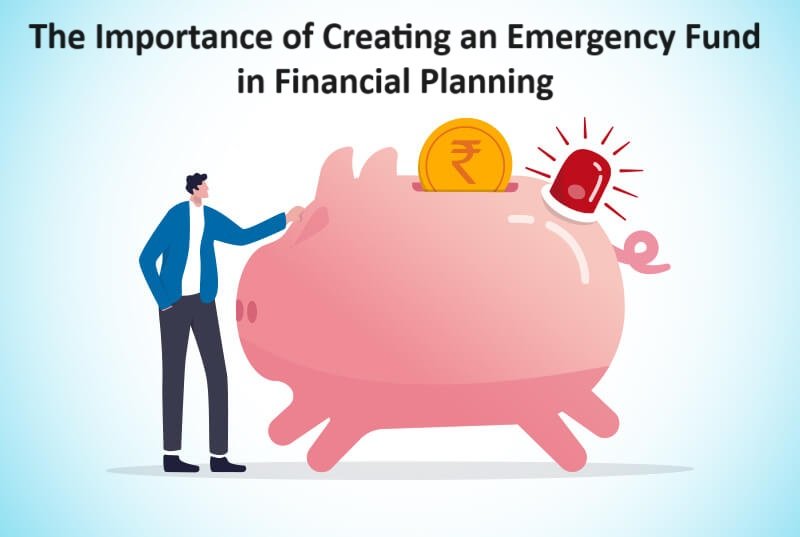The Importance of Creating an Emergency Fund in Financial Planning
Introduction:
Financial planning is essential for achieving long-term financial goals and security, but it’s equally important to prepare for unexpected expenses and emergencies that can derail even the best-laid plans.
That’s where an emergency fund comes in. In this blog post, we’ll explore the significance of creating an emergency fund as a crucial component of financial planning and how it can provide stability and peace of mind in times of uncertainty.
[ez-toc]
What is an Emergency Fund?
An emergency fund is a savings account specifically set aside to cover unexpected expenses and financial emergencies.
It serves as a financial safety net that provides immediate access to cash when needed most, without having to rely on credit cards, loans, or other forms of debt.
The primary purpose of an emergency fund is to cover essential living expenses during times of crisis, such as job loss, medical emergencies, car repairs, or home repairs.
Significance of an Emergency Fund in Financial Planning:
1. Financial Stability:
An emergency fund is the foundation of financial stability.
By having a cash reserve set aside for emergencies, individuals and families can weather unexpected financial setbacks without having to resort to borrowing or tapping into long-term savings and investments.
This stability helps prevent financial stress and uncertainty, allowing individuals to stay focused on their long-term financial goals.
2. Protection Against Debt:
One of the primary benefits of an emergency fund is its ability to protect against debt. Without an emergency fund, individuals may be forced to rely on high-interest credit cards or loans to cover unexpected expenses, leading to debt accumulation and financial strain.
Having cash reserves readily available allows individuals to pay for emergencies without going into debt, saving money on interest payments in the long run.
3. Flexibility and Peace of Mind:
Knowing that you have an emergency fund in place provides a sense of security and peace of mind.
It offers flexibility and options during times of crisis, allowing you to address emergencies without having to make rushed or desperate financial decisions.
This peace of mind is invaluable and can help reduce stress and anxiety related to financial uncertainty.
4. Prevention of Financial Setbacks:
An emergency fund serves as a buffer against unexpected financial setbacks that can derail long-term financial plans.
Whether it’s a sudden job loss, medical emergency, or major car repair, having cash reserves on hand allows individuals to address these challenges without derailing their progress towards financial goals such as saving for retirement, buying a home, or funding education.
5. Avoidance of Asset Liquidation:
In the absence of an emergency fund, individuals may be forced to liquidate long-term investments or assets to cover unexpected expenses.
This can result in financial losses, tax consequences, and disruption to long-term investment strategies. An emergency fund provides liquidity and preserves long-term assets, allowing investments to continue growing uninterrupted.
6. Protection Against Income Loss:
For individuals who rely on a steady income to cover living expenses, an emergency fund provides protection against income loss due to job loss, disability, or other unforeseen circumstances.
It serves as a temporary source of income replacement, allowing individuals to maintain their standard of living until they can secure new employment or income sources.
How to Build an Emergency Fund:
1. Set a Savings Goal:
Determine how much you need to save in your emergency fund based on your monthly living expenses, income stability, and potential risks.
Aim to save at least three to six months’ worth of living expenses, although the ideal amount may vary depending on individual circumstances.
2. Start Small and Consistent:
Building an emergency fund doesn’t happen overnight, so start small and contribute to your fund regularly.
Set up automatic transfers from your paycheck or checking account to your emergency fund to ensure consistent savings over time.
3. Cut Expenses and Increase Income:
Look for opportunities to cut expenses and increase your income to boost your savings rate.
Consider downsizing your living arrangements, eliminating non-essential expenses, or taking on a side hustle or part-time job to generate extra income for your emergency fund.
4. Prioritize High-Yield Savings:
Keep your emergency fund in a high-yield savings account or money market account that offers competitive interest rates.
This allows your savings to grow over time while remaining easily accessible when needed.
5. Avoid Temptation:
Resist the temptation to dip into your emergency fund for non-essential expenses.
Keep your emergency fund separate from your everyday checking account to reduce the temptation to spend it on discretionary purchases.
Conclusion:
An emergency fund is a cornerstone of financial planning that provides stability, security, and peace of mind in times of uncertainty.
By setting aside cash reserves to cover unexpected expenses and emergencies, individuals and families can protect against debt, financial setbacks, and income loss, allowing them to stay focused on their long-term financial goals.
Building an emergency fund takes time and discipline, but the benefits of financial stability and peace of mind far outweigh the effort required to establish and maintain one.
Start building your emergency fund today and take control of your financial future.
Finally, Thanks for reading my Blog on “The Importance of Creating an Emergency Fund in Financial Planning”.

